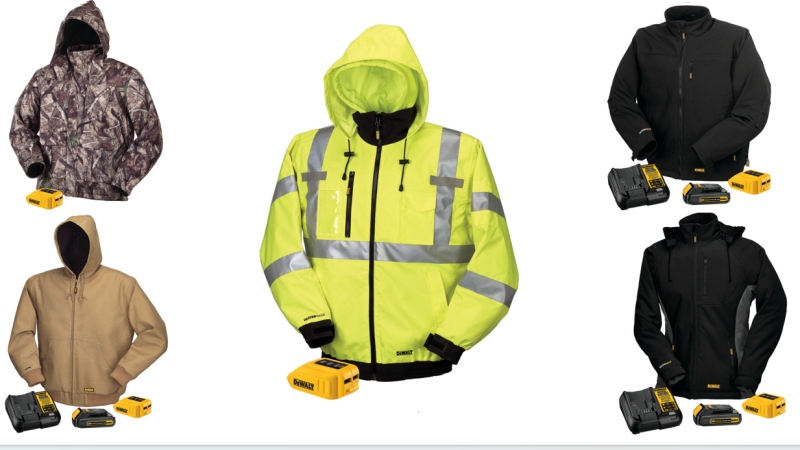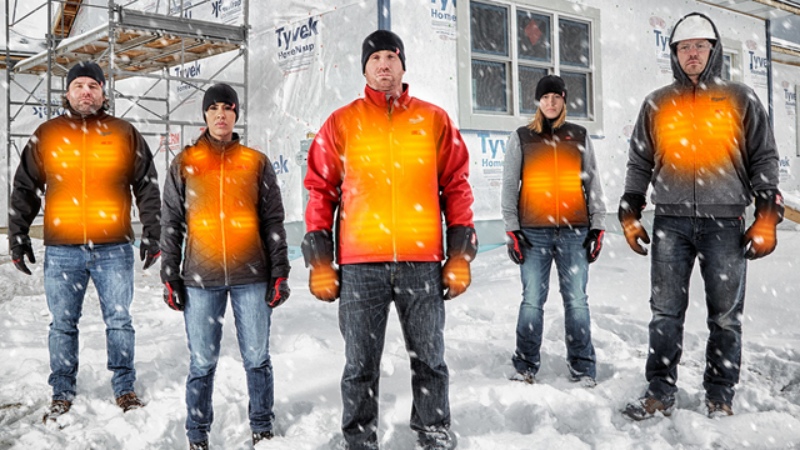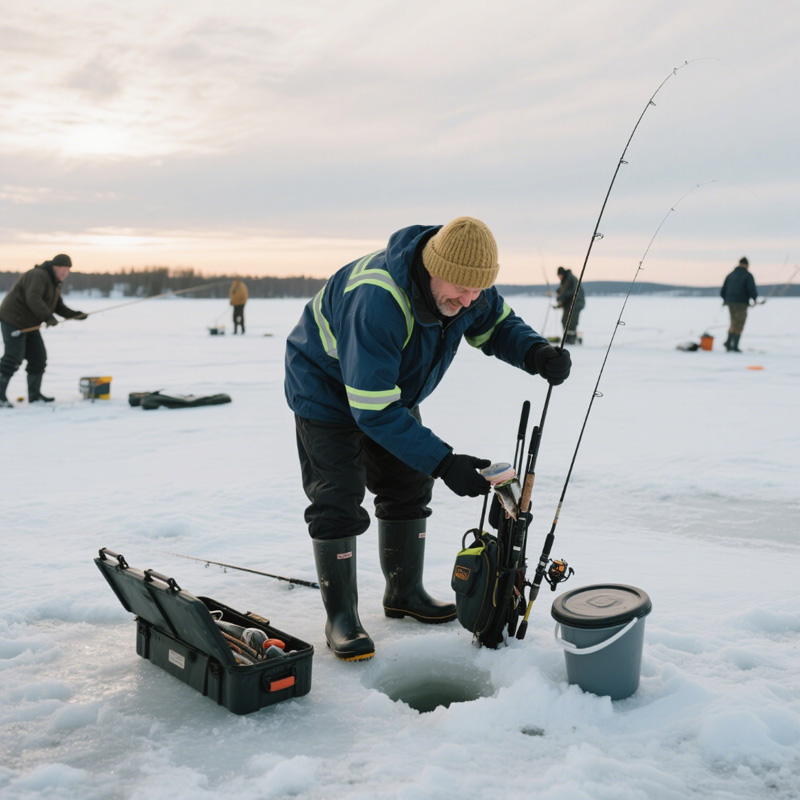In the journey to conquer the cold, heated jackets represent the fusion of fashion and functionality, bearing witness to the integration of technology into the realm of clothing. Once a niche product, these garments have now become an indispensable ally in combating the cold, continuously evolving to meet the demands of various activities and environments. This article will take you through a comprehensive overview of heated jackets, focusing on different types of heated jacket and their usage in different scenarios.
1. What Is a Heated Jacket?
The heated jacket is a specially designed outer garment with heating functionality, aiming to provide additional warmth. It typically utilizes advanced technology, integrating heating elements within the interior, which can be powered by batteries or an electrical source. Heated jackets often feature adjustable temperature settings, allowing users to select the appropriate level of warmth according to their needs.
The heating elements in heated jackets are usually positioned in the chest and back areas, ensuring the core body parts stay warm. Some heated jackets also come with heated hand pockets or heated neck zones to provide more comprehensive warmth.
Heated jackets have a wide range of applications, suitable for outdoor activities, winter sports, camping, and more. They can offer users additional comfort and protection in cold environments, helping to maintain body temperature and prevent discomfort or cold-related injuries.
As a functional garment, heated jackets not only provide warmth but also offer fashionable designs. Leveraging leading heating technology and functional features, in cold seasons, when you are engaged in outdoor activities, work, exercise, or commuting, if you are concerned about temperature fluctuations, a battery-powered jacket may be your best choice.
2. The Working Principle of a Heated Jacket
A heated jacket is an outerwear garment that incorporates heating functionality to provide additional warmth by using built-in heating elements. It is a combination of modern technology and fashionable design, offering increased comfort and insulation in cold environments.
Heated jackets are typically made from durable, wind-resistant, and waterproof materials, ensuring excellent insulation and durability. They are designed similar to traditional jackets, available in various styles and colors to cater to individual preferences and fashion needs.
The built-in heating elements in a heated jacket are usually made of conductive materials such as carbon fiber or graphene. When these heating elements are powered, they generate resistive heating effects, converting electrical energy into heat and radiating warmth to the surrounding environment. These heating elements are strategically placed in key areas such as the back, chest, and collar to provide targeted warmth.
Heated jackets are typically equipped with rechargeable batteries or portable power sources as the power system, allowing them to function independently of external power sources. This enables individuals to use the heated jacket in outdoor activities or situations where power outlets are not available, ensuring warmth and comfort.
BOWINS Garment produces heated jackets also feature temperature control devices that allow users to adjust the heating levels according to their needs. This personalized feature enables the heated jacket to adapt to different temperature environments and individual preferences.

3. The Classification of Heated Jackets
3.1 There are four categories of heated jackets based on different heating methods
Carbon Fiber Heated Jackets: These jackets are made by twisting multiple strands of ultra-fine carbon fiber into a rope-like form and embedding them as heating elements between two layers of fabric. Carbon fiber is a lightweight and high-strength conductive material that exhibits excellent thermal conductivity and resistive heating effects. Carbon fiber heating is currently the most widely used heating method in heated apparel.
Graphene Heated Jackets: These jackets incorporate a heating layer made by combining prepared graphene material with flexible fabric and then laminating it onto other fabrics to create the heated jacket. Graphene possesses extremely high electrical and thermal conductivity, allowing it to generate heat when an electric current is applied. However, due to the challenges in large-scale industrial production of graphene, its application in consumer products is still relatively limited.
Nano-Carbon Heated Jackets: These jackets feature a nano-carbon film composed of carbon nanotubes and graphene, which is embedded between two layers of fabric to create a heating fabric. The nano-carbon film can be bent freely while maintaining a stable structure and electrical properties. However, the production cost of nano-carbon heated jackets is higher, and the manufacturing process is complex. With technological advancements, it is expected that the usage of nano-carbon heating garments will become more widespread in the future.
Semiconductor Heated Jacket: A heated jacket that utilizes thermistor semiconductors as heating elements. This heating technology enables rapid heating and is suitable for extremely cold environments. However, the cost of semiconductor heated garments is still relatively high, limiting their usage to specific applications.
3.2 There are three categories of heated jackets Based on different usage scenarios
Outdoor Heated Jackets: Primarily designed for outdoor activities such as camping, hiking, skiing, etc. These jackets typically feature windproof, waterproof, and abrasion-resistant properties to withstand harsh weather conditions and complex environments, helping users stay warm in cold outdoor environments.
Everyday Heated Jackets: These jackets prioritize fashion and comfort, suitable for daily activities such as shopping, commuting, socializing, etc. They are crafted with lightweight materials and stylish designs to provide a comfortable wearing experience, along with essential warmth and protection.
Extreme Cold Heated Jackets: Mainly used in professional environments that require outdoor work, such as cold storage facilities, winter construction sites, or search and rescue operations. These jackets must meet safety standards and often possess features like durability, abrasion resistance, and insulation to adapt to harsh working environments and requirements.
In order to cater to the preferences of various users, the heated jacket market also offers different material options. For example, softshell heated jackets provide good flexibility and breathability, while hardshell heated jackets offer excellent windproof and waterproof properties. Insulated heated jackets provide maximum warmth.

4. What Are Benefits of Heated Jacket?
4.1 Warmth
The heated jacket has built-in heating elements that can effectively provide continuous warmth to the body. In cold weather, it can help maintain body temperature and prevent chills. This is very beneficial for outdoor activities or work.
4.2 Comfort
Proper temperature regulation can make people feel comfortably warm, improving the comfort of work and life. It helps improve mood and increase work efficiency.
4.3 Health Benefits
Keeping the body warm is beneficial for blood circulation, reducing joint and muscle stiffness, and thereby reducing the risk of injury. It can also provide some relief for patients with certain joint diseases.
4.4 Energy Efficiency and Environmentally Friendly
Compared to other heating methods, the heated jacket can concentrate the heat on the body, avoid wasting heat, and has relatively high energy utilization efficiency, making it more environmentally friendly and energy-saving.
4.5 Portability
The heated jacket is lightweight and portable, allowing it to be carried around easily and used conveniently during outdoor activities or work.
In cold weather, maintaining warmth is crucial for outdoor workers. As a product of modern technology, heated jackets provide a more effective way to withstand the cold. They have strong insulation capabilities, continuously providing appropriate warmth to the body. They are versatile and suitable for various scenarios, whether it’s for adventurers, outdoor workers, or ordinary individuals. Additionally, they offer comfort and multifunctional design, allowing temperature adjustment according to individual needs. In summary, a portable and durable heated jacket is definitely a worthwhile investment in practical gear.
5.Conclusion
As an OEM/ODM heated jacket manufacturer and supplier, BOWINS Garment, with more than 15 years of industry experience and expertise, has established long-term strategic partnerships with numerous well-known apparel brands around the world, providing services to customers in Europe, the Americas, the UK, Canada, Australia, Japan, South America, South Korea, Russia, Southeast Asia, and more.
Our company currently has over 600 employees, including more than 120 R&D and design experts, who focus on improving OEM/ODM service capabilities, including fabric development, product design, process optimization, and smart manufacturing. The annual production volume of heated garments exceeds 1 million units, and BOWINS Garment provides comprehensive customized heated clothing, including jackets, vests, and pants.
As a professional functional garment manufacturer, BOWINS Garment has always been committed to the design and development of heated jackets and other functional clothing, continuously improving its production level, and providing high-quality customized services to domestic and international customers. If you have any questions or needs regarding heated clothing, please feel free to contact us. Our team is always ready to provide service for your requirements.




